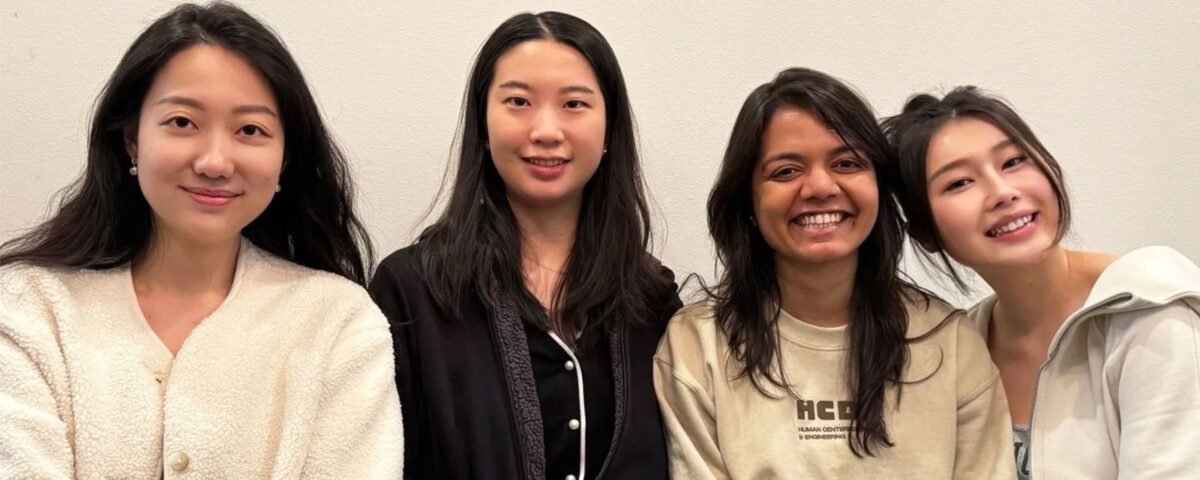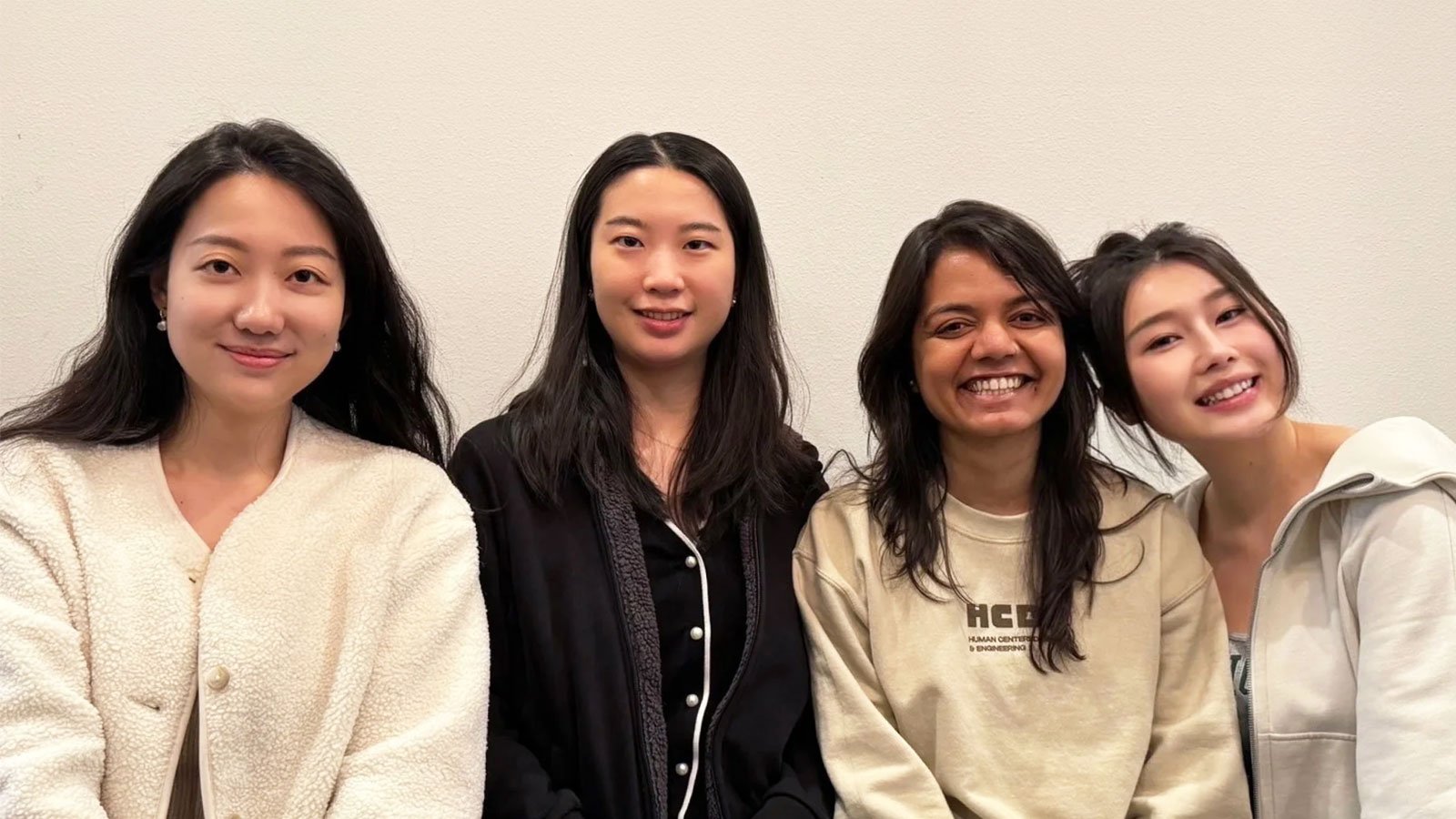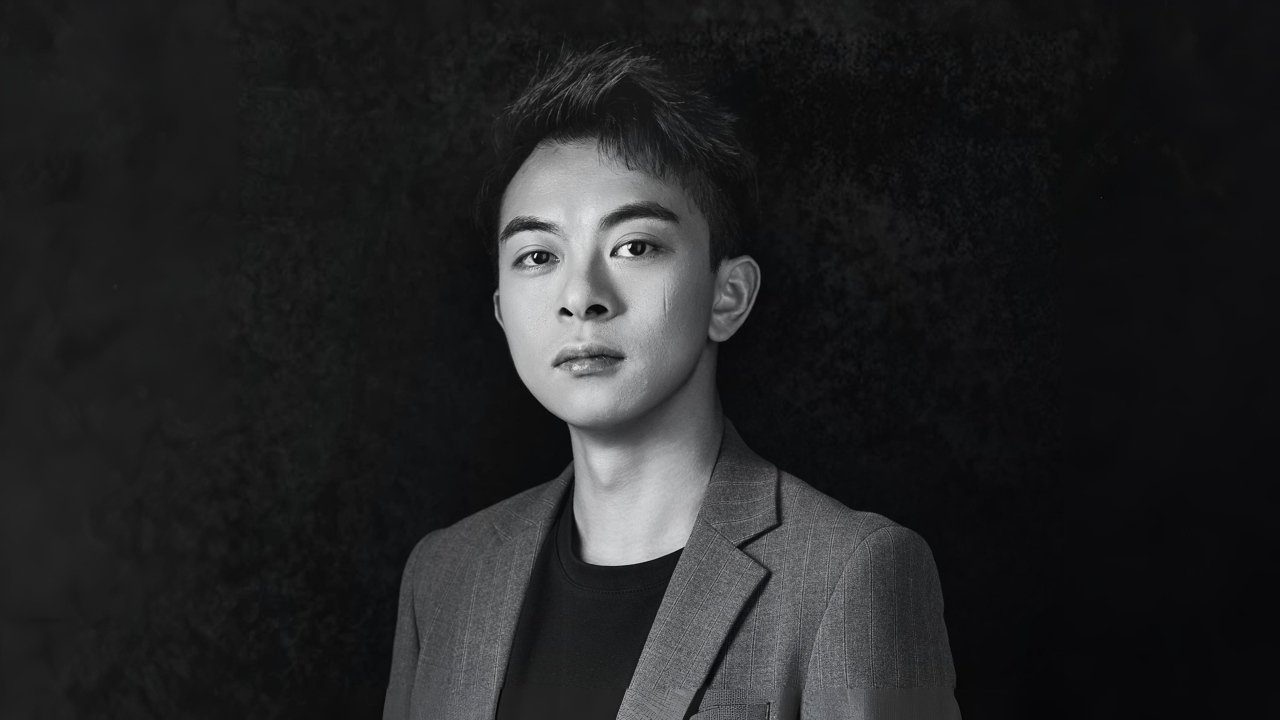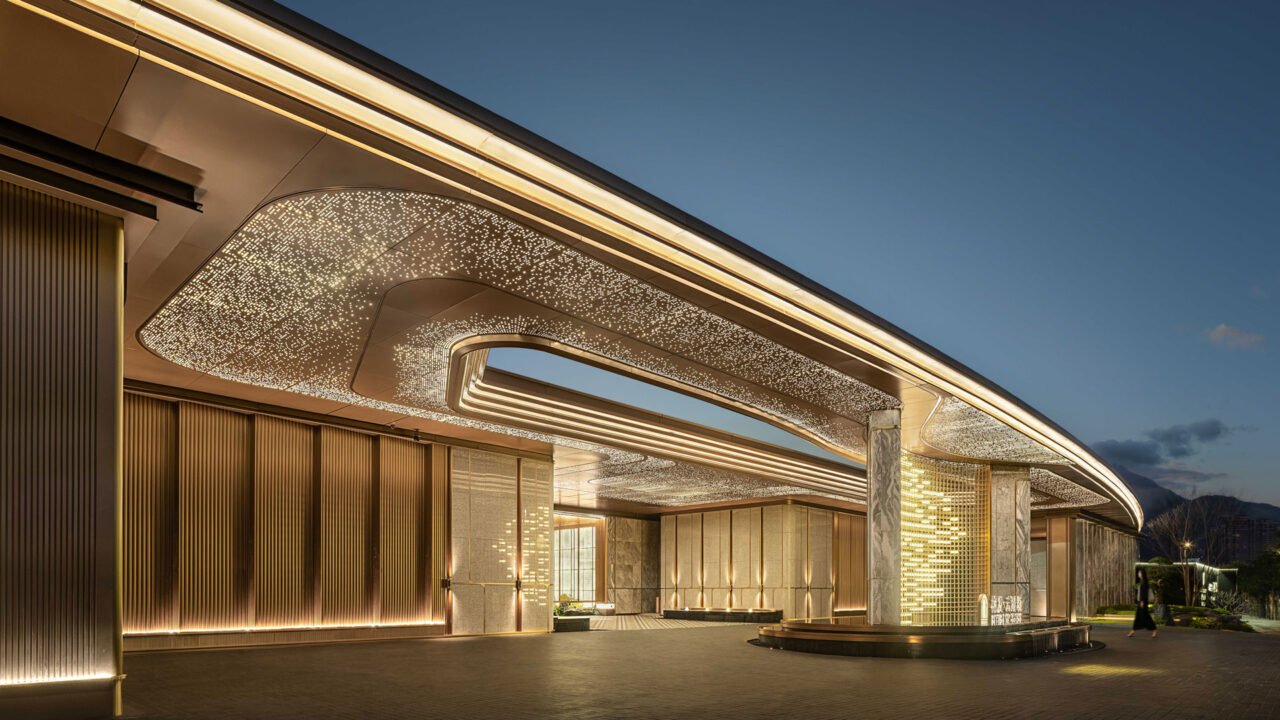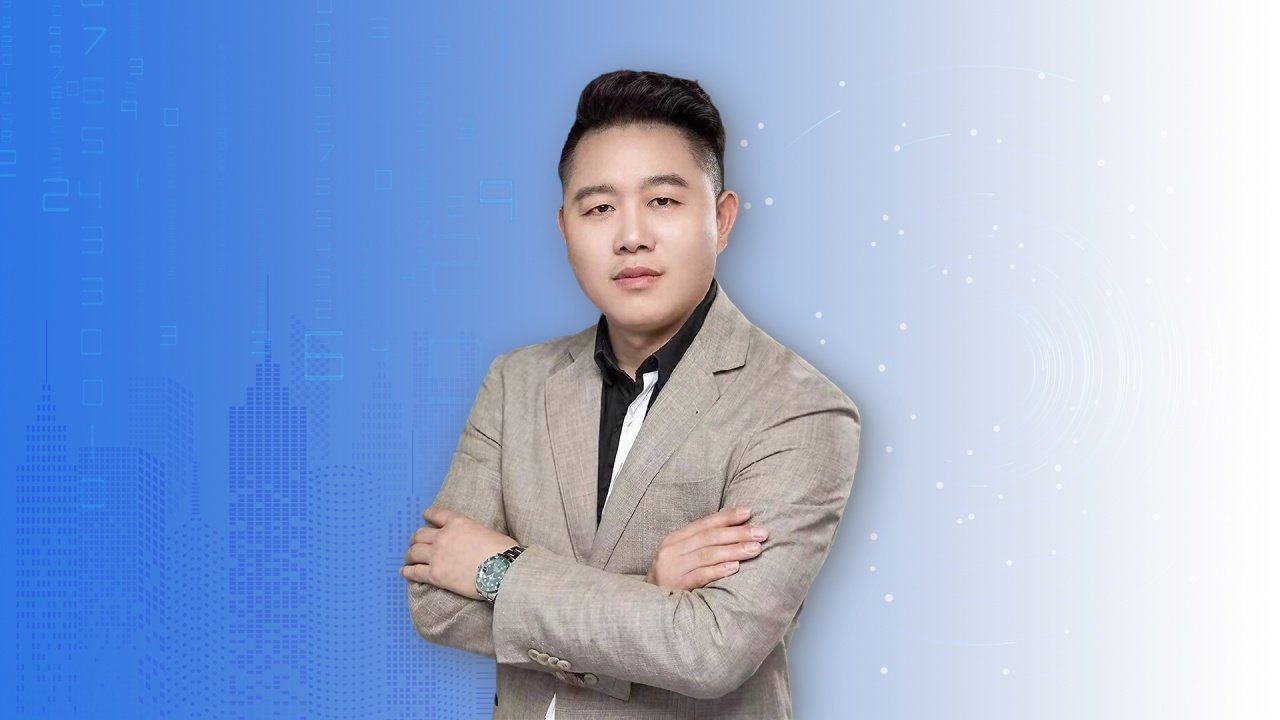
15 Years of Digital Design, Leadership, and Growth with Rava Elenovich
July 8, 2025
Designing the Everyday Beautiful: An Interview with Mallory Bouchard
July 8, 2025AI Director Team
The AI Director Team - Haotian Wu, Maomao Ding, Deeksha Meshram, and Wenxin Wang brings expertise in visual design, architecture, product management, and user research. They create intuitive, technology-driven solutions that enhance creativity and make meaningful experiences accessible to all.
Haotian Wu: Thank you very much. My journey in design began at a young age through drawing, which naturally evolved into a passion for visual and interaction design. I’ve always been fascinated by how thoughtful design can solve real-world problems and improve people's daily experiences.
Today, my work is driven by a mission to create meaningful, intuitive solutions—often leveraging emerging technologies like AI to enhance human creativity.
Maomao Ding: Thank you. I’m a UX/UI designer with a background in visual design. What drew me to design was the blend of creativity and problem-solving.
I’ve always been curious about how people interact with technology and how design can make those experiences feel more thoughtful and intuitive. That curiosity keeps me excited to keep learning, building, and improving.
Deeksha Meshram: Thank you! I've always been drawn to design because I love creating things and solving problems in meaningful ways. Initially, this passion led me to architecture, where I first discovered design as a discipline and eagerly explored it further.
I'm especially excited by design’s ability to impact people on a personal level in a positive way. I believe technology has the power to democratize access to products once limited to a few, and I’m passionate about working toward that goal.
Wenxin Wang: Thank you! I’m Wenxin, a product manager and user researcher with a background in data science and coding. I naturally moved into design because I love deeply understanding user needs and finding solutions that balance business goals, user experience, and technical possibilities.
Haotian Wu: Receiving this award is a significant honor and a meaningful milestone in my career. It reinforces the importance of merging design with emerging technologies to create innovative experiences.
I’m especially proud that our AI-powered video design project was recognized, as I believe it represents the future of how people will engage with creative tools. This recognition motivates me to keep pushing boundaries in UX design.
Maomao Ding: Being recognized by the MUSE Design Awards means a lot to me, especially for a project centered on human–AI interaction. Designing something that balances powerful technology with an intuitive, approachable experience was a real challenge.
This award validates the effort we put into making the product feel both intelligent and accessible. It inspires me to continue exploring how design can simplify complex tools and help people work with greater confidence and creativity.
Deeksha Meshram: This recognition from the MUSE Design Awards is incredibly meaningful—it affirms my passion for creating purposeful, human-centered design. I’m especially proud that our AI video generation platform was recognized, as it reflects my commitment to democratizing creativity through the power of AI.
The award is both humbling and inspiring, pushing me to continue solving meaningful problems and exploring new ways to bridge technology and the human experience. I truly believe thoughtful design can make AI solutions more intuitive, empowering, and accessible to all.
Wenxin Wang: It’s an incredible encouragement for me and the team. It shows that not only our technology, but also our user-first mindset and vision for AI video creation, are being recognized and validated.
Haotian Wu: Winning the MUSE Design Award has brought tremendous positive attention to my work. It has opened new opportunities for collaboration and sparked important conversations around the role of AI in design.
More importantly, it has provided a platform to advocate for more human-centered approaches when integrating technology into creative workflows.
Maomao Ding: This achievement has given me more confidence to speak about my work and design approach. It’s opened the door to new conversations with designers and teams who care about thoughtful, user-centered tools. It also helped me reflect on the kind of impact I want my work to have moving forward.
Deeksha Meshram: This achievement has been a powerful milestone in my career—it’s not only elevated the visibility of my work but also opened up conversations with other designers, creators, and innovators who are passionate about human-AI interaction.
For our team, it’s been a moment of shared pride and validation, reinforcing the impact of our collaboration and design thinking. It’s sparked interest from new partners and potential collaborators, and it has encouraged us to keep pushing the boundaries of what’s possible with AI-powered creative tools.
Wenxin Wang: Winning the award has brought more visibility to our work and opened conversations with new partners who are excited about AI and creative tech. It also boosted the team’s confidence in pushing bold ideas forward.
Haotian Wu: Experimentation is a vital part of my creative process — it’s where true innovation happens. It allows me to stay agile, test new ideas quickly, and adapt based on real user feedback.
For example, during our recent AI video tool development, we constantly prototyped and iterated, refining the experience through dozens of experiments before finding the best approach for users.
Maomao Ding: Experimentation is a big part of how I work. It helps me explore different directions before committing to one. For the AI video editing tool, I tested multiple ways to simplify the timeline interface. I started with quick sketches, built rough prototypes, and refined the details through user feedback.
Deeksha Meshram: Experimentation is at the core of my creative process—it allows me to explore unconventional ideas, test assumptions, and uncover possibilities that a linear approach might miss. Especially when working with emerging technologies like AI, experimentation helps me balance complexity with usability.
For example, while designing our AI video generation platform, I experimented with different ways users could interact with scene-by-scene editing without overwhelming them. I prototyped multiple flows—from script-first to visual-first approaches—and tested them with users to understand their mental models.
These iterative experiments led to a hybrid interaction model that felt both intuitive and flexible, ultimately improving user satisfaction and creative control.
Wenxin Wang: Experimentation is core for me — I believe in fast testing ideas to learn quickly. In this project, we experimented a lot with how users could guide AI video generation, and iterated based on real feedback instead of just relying on assumptions.
Haotian Wu: One unexpected source of inspiration came from simply observing how people create videos without any AI support. We spent hours studying users' habits — from the way they stitched footage manually to the creative shortcuts they invented.
Seeing both their frustrations and moments of joy gave us insights into what an AI video tool needed to truly empower creativity, not just automate tasks.
Maomao Ding: One of the most unusual sources of inspiration came from watching behind-the-scenes videos of film editors at work. For the AI video editing tool, I wanted to understand how professionals think while cutting and arranging clips. I noticed their subtle hand gestures, quick decision-making, and how they used rhythm and pacing to shape a story.
It wasn’t a typical design reference, but it helped me think beyond UI patterns and focus on flow, timing, and user intent. That inspiration led to interaction choices that felt more natural and aligned with how people actually edit videos.
Deeksha Meshram: One of the most unexpected sources of inspiration for me came from watching behind-the-scenes workflows of YouTube content creators and indie filmmakers. I was fascinated by how they juggle scripting, shot planning, editing, and visual storytelling—often with limited tools and time, yet producing incredibly engaging content.
While working on the AI video generation platform, I kept thinking about their creative hustle—the need for flexibility, quick iteration, and visual control. This inspired features like scene-by-scene previews, easy image regeneration, and timeline-based editing. It reminded me that good design isn’t just about simplifying tasks—it’s about supporting the messy, nonlinear, and deeply creative process people go through to bring ideas to life.
Wenxin Wang: One time, inspiration came from how musicians improvise during a live performance. It helped me think about building more flexible and creative user flows for AI-generated videos.
Haotian Wu: I wish more people understood that design, especially with AI, is not just about aesthetics — it’s about creating systems that truly understand and enhance user intent. Successful design today requires blending technical innovation with deep empathy for human needs.
Maomao Ding: I hope more people understand that good design takes time and iteration. The process can look simple from the outside, but there is a lot of thought and problem solving behind every decision.
Deeksha Meshram: I wish more people understood that design isn’t just about aesthetics—it’s about solving the right problems through iteration, empathy, and constant refinement. Behind every seamless experience is a messy, thoughtful process that often goes unseen.
Wenxin Wang: Design is not just about making things look good — it's about deeply understanding user needs, solving real problems, and working with technical and business constraints at the same time.
Haotian Wu: Balancing client goals with creative vision is essential in every project. I believe in early, transparent collaboration to align on the core objectives, while still advocating for design solutions that push boundaries. When both sides trust the process, we can create outcomes that are not only successful but also forward-thinking.
Maomao Ding: I focus on understanding the core goals early on so I can align with the client while still bringing my perspective into the work. I try to ask the right questions, share my thinking clearly, and stay open to feedback. When there's trust and clear communication, it's easier to find solutions that meet both user needs and creative intent
Deeksha Meshram: I navigate the balance by grounding my ideas in user needs and evidence. I listen closely to client goals, then frame my design decisions around how they support those objectives while also advocating for what will create the best user experience. It’s about collaboration, not compromise—finding solutions that align business goals with thoughtful, effective design.
Wenxin Wang: I always start by understanding the client’s real goals, then use storytelling and future vision to show them how our ideas can achieve even more. It’s about building trust and guiding them step-by-step.
Haotian Wu: Designing for AI was a unique challenge because it meant shaping experiences for a future that's still evolving. We had to anticipate needs that users might not even realize yet. To overcome this, we focused heavily on user research, rapid iteration, and close collaboration with engineers to ensure the technology stayed approachable.
Maomao Ding: One challenge was simplifying a powerful AI tool without making it feel limited. We took multiple rounds of testing to get the right balance between control and ease of use. We overcame this by working closely with users, gathering feedback early, and refining interactions until the experience felt intuitive, especially for people who were new to video editing tools.
Deeksha Meshram: One of the biggest challenges was designing a complex AI video generation tool that felt intuitive and approachable for non-technical users. Balancing powerful functionality with a simple, guided experience required constant iteration.
We overcame this by running usability tests early and often, simplifying the interface without limiting creative control, and breaking down the workflow into clear, manageable steps.
Wenxin Wang: One big challenge was convincing clients to trust new AI video generation technology, which was still evolving. We overcame it by showing clear future use cases, doing a lot of demos, and constantly aligning with both user needs and technical feasibility.
Haotian Wu: Whenever I feel stuck creatively, I step back and study how others are approaching similar challenges. Sketching new ideas, observing user behavior, and identifying emerging patterns often helps me unlock new perspectives. I also find inspiration by analyzing trends outside my immediate field.
Maomao Ding: When I hit a creative block, I step away from the screen. I go for a walk, sketch without pressure, or spend time on something unrelated like reading or watching films. Shifting focus helps me reset, and I usually come back with a clearer mind and fresh perspective.
Deeksha Meshram: When I hit a creative block, I step away from the screen and immerse myself in something completely different—like sketching, walking in nature, or watching films. Changing my environment helps me reset.
Wenxin Wang: I usually step away, talk to users again, or dive into different industries for inspiration. Seeing problems from a fresh angle always helps me reconnect with new ideas.
Haotian Wu: I always integrate a forward-thinking mindset — combining emerging technologies with a deep commitment to user empathy. I believe great design sits at the intersection of innovation and real human needs, and I make it a priority to ensure my work captures both.
Maomao Ding: I bring curiosity, empathy, and clarity into my design work. I care about how people feel when they use a product, and I try to design experiences that are helpful, respectful, and easy to understand.
Deeksha Meshram: Empathy, inclusivity, and curiosity are core values I infuse into my designs. Growing up in a context where access to technology wasn’t always equal, I’m driven to create tools that are intuitive and empowering for a wide range of users.
My background in architecture also shaped my appreciation for structure and storytelling, which I carry into digital design—ensuring each experience is both functional and emotionally resonant.
Wenxin Wang: I always bring empathy, technical understanding, and business thinking into my work. My background in coding and user research helps me design solutions that are not just creative but also executable and impactful.
Haotian Wu: Always champion the user, no matter how advanced the technology you’re working with. Stay curious about the future, especially how AI and new tools can shape better, smarter experiences. Design with empathy — and think ahead.
Maomao Ding: Start by focusing on the problem you’re solving, not just the visuals. Stay curious, ask questions, and don’t be afraid to share your work early. Learn to take feedback without taking it personally. The best designs come from iteration, collaboration, and being open to growth throughout the process.
Deeksha Meshram: Stay curious, stay empathetic, and don’t be afraid to iterate—success in design comes from deeply understanding people, not just perfecting pixels. Focus on solving real problems, ask questions fearlessly, and treat feedback as a tool, not a setback. Most importantly, trust the process—it’s where the real growth happens.
Wenxin Wang: Always focus on understanding users first, not just delivering pretty designs. And learn how technology and business work — it will make your ideas much stronger and more real.
Haotian Wu: Honestly, I would choose my current teammates. Their creativity, technical expertise, and passion for user-centered design inspire me every day. Collaboration with people who share a vision always leads to the most groundbreaking work.
Maomao Ding: I’d choose my current teammates as well. They bring a sharp mix of creativity, critical thinking, and collaboration to every project. We challenge each other in the best ways, and there's a strong sense of trust that makes it easy to explore new ideas.
Deeksha Meshram: I’d choose to collaborate with my current teammates. They bring a diverse mix of perspectives, creativity, and problem-solving approaches that constantly push me to grow. We challenge each other’s ideas in the best way, stay aligned through open dialogue, and take ownership of our work.
Wenxin Wang: I would love to collaborate with my teammates because their design philosophy — making things simple, useful, and honest — really matches how I think about building products.
Haotian Wu: I wish more people asked how AI-driven design can transform the creative process itself. My answer would be that by thoughtfully integrating AI, we can unlock new levels of efficiency and imagination — helping creators focus more on ideas, not just execution.
Maomao Ding: I wish more people would ask, “What do you want users to feel when they use your design?”. I want users to feel like they know what to do, that the product understands them, and that they’re in control. If the design feels simple, helpful, and respectful, I know I’ve done my job.
Deeksha Meshram: I wish more people would ask, “What impact do you hope your work has on others?” My answer would be I hope my work empowers people—especially those who’ve traditionally been left out of tech—to create, express, and solve problems with confidence.
Whether it's through intuitive interfaces or accessible AI tools, I want my designs to make complexity feel approachable and creativity feel possible for everyone.
Wenxin Wang: I wish more people would ask how we balance new technology with real user needs. My answer is: by always staying close to users’ pain points, but also daring to show them a better future they might not imagine yet.
AI Director Team
The AI Director Team - Haotian Wu, Maomao Ding, Deeksha Meshram, and Wenxin Wang brings expertise in visual design, architecture, product management, and user research. They create intuitive, technology-driven solutions that enhance creativity and make meaningful experiences accessible to all.
Explore the journey of Xinxing Wu, the Gold Winner of the 2025 MUSE Design Awards. He transforms spaces through light, blending technical mastery with storytelling in award-winning projects like Yun Tai Shan Nightscape and Foshan Times I-City Art Center.

